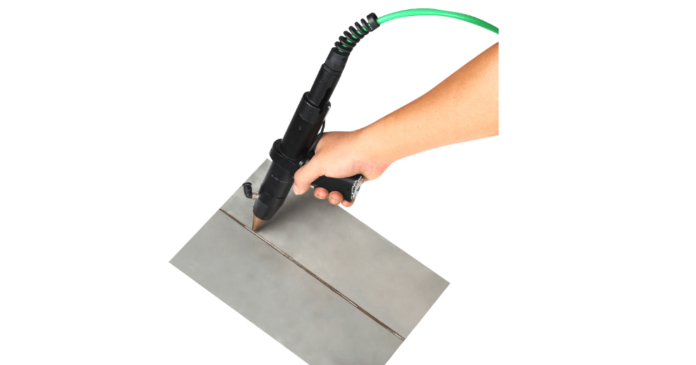In metalworking, it is sometimes essential to join metals and thermoplastics together using a concentrated heat source such as a high-intensity laser beam in a process called laser welding. Thinner materials allow welders to conduct the operation at incredibly high speeds, meters per minute. However, in thicker materials, the process results in deep, narrow welds that occur between parts with square edges. Laser processing has numerous advantages, and using a handheld laser welding machine is used to join small electronic parts and steel components that exceed 1 inch in thickness. As soon as lasers were invented, they were applied to the welding process with a high degree of success. Let’s focus on the advantages of laser welding.
Understanding the handheld laser welding machine process
There are two basic modes of operation utilized in laser welding: keyhole welding, and conduction-limited welding. How the laser beam will interact with the material depends on the power setting of the beam striking the surface of the material.
- Conduction-limited welding
The power density setting for the lasers used in this technique is typically set to less than 105W/cm2 for most operations. This means that the laser beam will be absorbed in the material’s surface only, without penetrating it. The results of this process depict high width to depth ratios.
- Keyhole welding
In this technique, the laser is directed on a small spot to generate a power density that regularly exceeds 106-107W/cm2, allowing the material in the laser’s path to melt and even vaporize. Afterward, a large amount of heat from the keyhole welding process is removed by conduction. The high-intensity laser beam also penetrates the material, forming a “keyhole” cavity that contains metal vapor. The metal vapor expands, preventing the collapse of the molten keyhole walls during the process.
Advantages of laser welding
Using a high-quality handheld laser welding machine comes with several benefits, including:
- The possibility of vast working distances, up to 500mm with increased access to challenging to reach parts.
- Laser welding provides cavity-free welds.
- In the use of a handheld laser welding machine, there is low heat application resulting in small changes in a material’s microstructure.
- Handheld laser welding machines allow a low level of thermal distortion.
- Laser welding allows the worker to operate precisely with the exact direction of the energy spot.
- Laser welding comes with low post-weld work times
- Handheld laser welding machines allow workers to weld complicated geometrical joints.
Areas where handheld laser welding can be applied
- Precision working
Laser beams are incredibly economical for working with components and parts requiring high precision, and in most cases, such components and parts cannot be adequately welded using conventional techniques.
- Sensor technology
Laser welding can be applied in the fabrication of pressure diaphragms, thermocouples, light sensors, and regular sensors.
- Mold and tool manufacturing
Molds and tools which are worn and damaged can be repaired fast using overlay laser welding techniques.
Conclusion
In using handheld laser welding machines, lasers provide a source of heat, and it is done through pulsed laser. Handheld wires are selected based on diameter and alloy, resulting in a process that can be applied to many scenarios.







